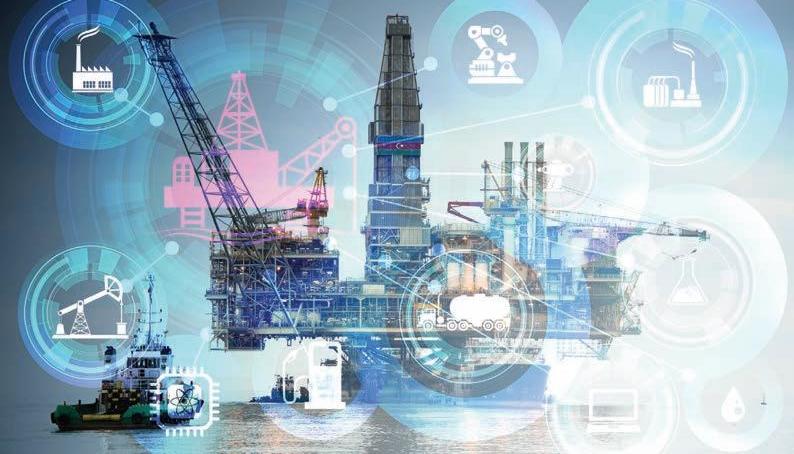
2 minute read
Process automation
DRIVEN BY DATA: THE ERA OF AUTOMATED FIELDS
In an industry that had already embraced automation, expect more to come in the wake of the pandemic as operators in Africa and across the globe embrace technology in a bid to slash costs. Martin Clark explores the latest advances in this exciting sector.
THE DEPENDENCE OF the oil and gas industry on automation has accelerated over the past decade in response to ever more complex processes, tough economics brought about by low pricing, as well as safety for human workers. Automation agives operators immediate access to performance, condition and technical data which speeds up decisionmaking, troubleshooting, and performance efficiency. That’s a huge benefit on billion-dollar installations such as refineries and offshore rigs.
More looks set to come with research pointing to a near doubling of spending in automation and control systems over the coming years. One report, Oil & Gas Automation and Control System Market: Growth, Trends, and Forecast (2020-2025), expects the value of these areas to jump from about US$30bn to US$52bn by 2025. That represents a growth of some 9.8 per cent. While all forecasts are now subject to the effects of the pandemic influence − which is expected to wipe billions of dollars from capital budgets the world over − it is clearly an area the industry believes in.
The technology continues to advance to facilitate even more sophisticated automation. Siemens’ product innovations this year include the Sitrans MS Multisensor, which is used primarily for the condition monitoring of mechanical plant components such as pumps, compressors, gears and valves. Through the AI-based analysis of sensor data, such as vibrations and temperatures, important information can be generated for predictive maintenance.
West Africa has proved fruitful ground for specialists in this niche. Last year, Intech reported progress on a number of flagship
.projects including the completion of the control automation scope for a major platform upgrade offshore Nigeria. It announced a control and safety system upgrade in October for an undisclosed oil facility in Angola. In this case, that meant upgrading an older system owing to obsolescence and falling availability of spares and OEM support.
As well as control systems and automation, there is ongoing
While all industry forecasts are subject to the pandemic influence, the industry believes in process automation technology.”
The potential for process automation technology across all sectors of the industry is enormous.
interest in other technologies that enable remote operations, an area where great cost efficiencies can be realised − a priority especially in the current price environment.
This includes unmanned drones and submersible devices that help to monitor and aid the inspection process. These vehicles are controlled remotely, and can broadcast live video feeds and data back to a central location anywhere in the world.
While the digital oilfield is not a new concept − operators have been deploying automation and control systems on vital assets for years − the drive toward automated workflow only looks set to increase as the world emerges from the Coronavirus health crisis.










